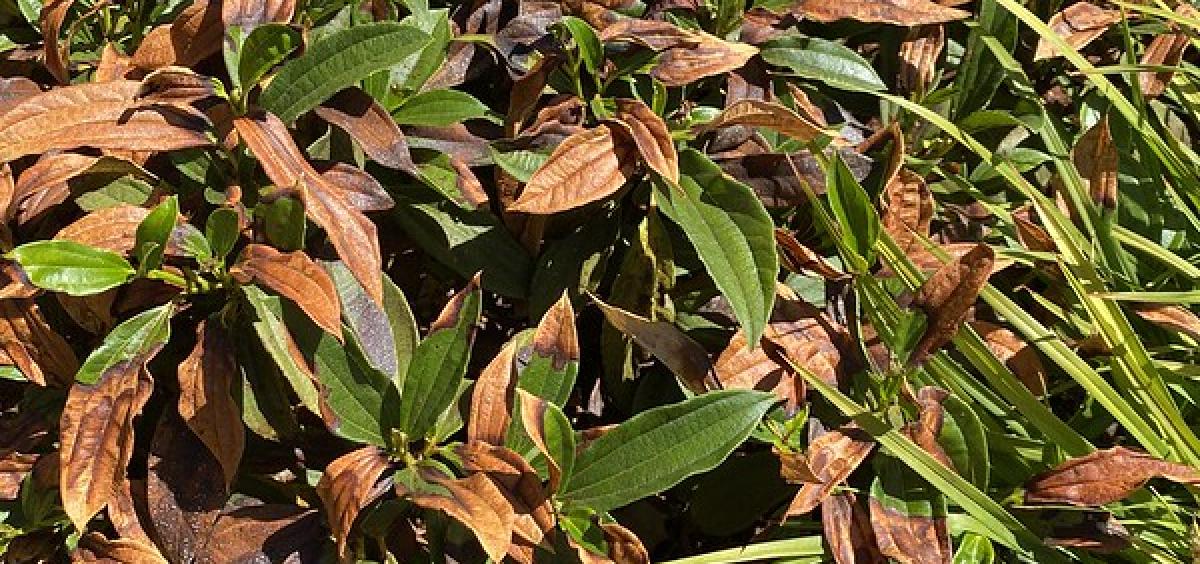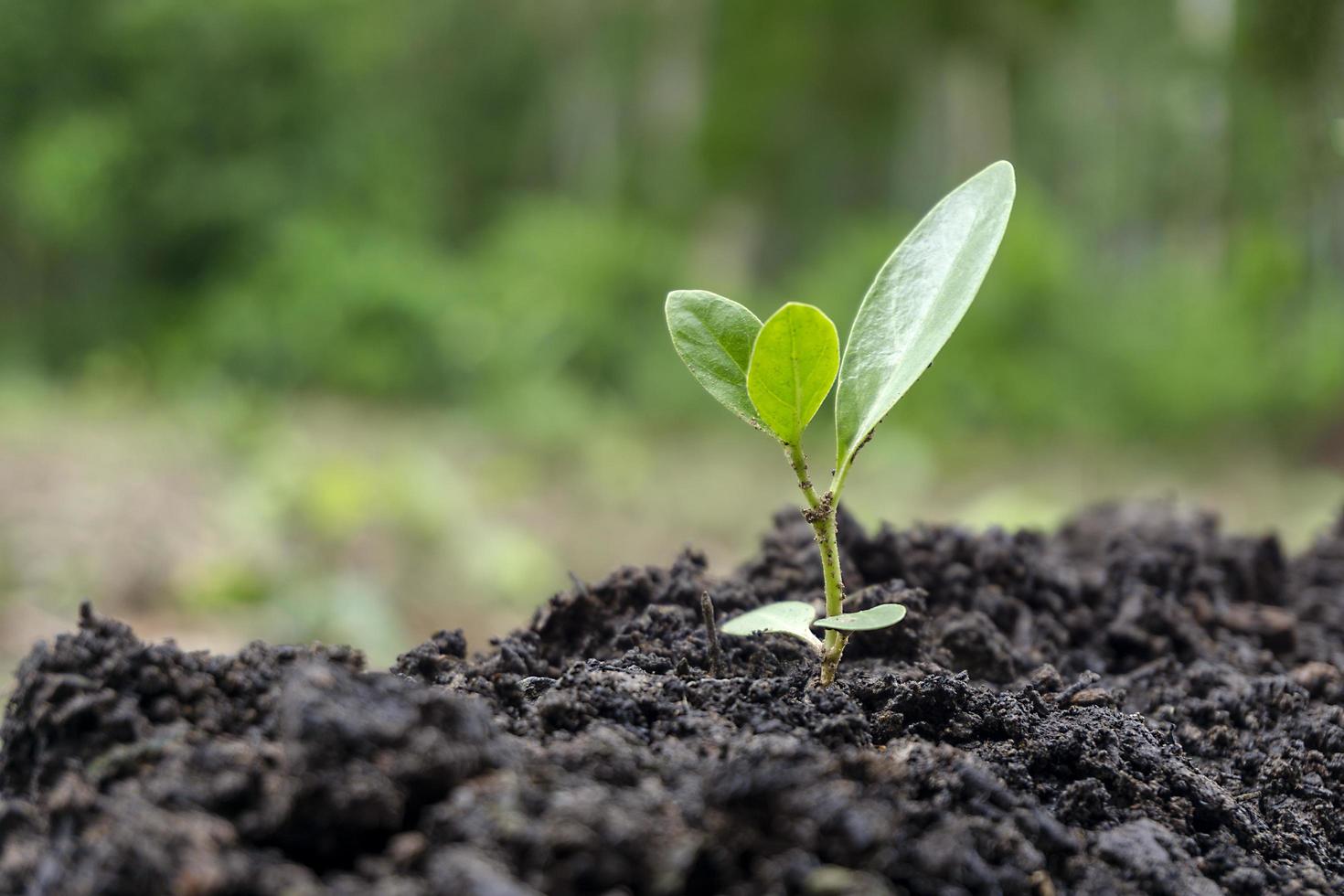Abiotic Stress - Can Melatonin-Induced Protection Help Plants Recover From Abiotic Stress?
Due to their sessile nature, plants are increasingly vulnerable to abiotic stress. Their growth and productivity are impacted by abiotic stresses such as nutrient shortage, heavy metal stress, heat stress, salinity stress, and drought stress. These abiotic stresses disrupt plant physiological and metabolic development, causing reactive oxygen species (ROS), lipid peroxidation, osmolyte accumulation, and yield loss. Due to rapid climate change, the intensity of these abiotic stresses is rising, and appropriate action is needed.
Author:Suleman ShahReviewer:Han JuJul 05, 20221 Shares516 Views

Due to their sessile nature, plants are increasingly vulnerable to abiotic stress. Their growth and productivity are impacted by abiotic stresses such as nutrient shortage, heavy metal stress, heat stress, salinity stress, and drought stress.
These abiotic stresses disrupt plant physiological and metabolic development, causing reactive oxygen species (ROS), lipid peroxidation, osmolyte accumulation, and yield loss.
Due to rapid climate change, the intensity of these abiotic stresses is rising, and appropriate action is needed.
Plants have evolved a wide variety of resistance mechanisms in order to withstand the effects of abiotic stresses.
Such tools include plant growth regulators, osmolyte synthesis and accumulation to protect against stress-induced damage and maintain cellular homoeostasis and plant growth.
One such molecule, melatonin (MT), is important for controlling plant growth under stress. It is a pineal molecule discovered in bovine pineal glands.
What Is The Biosynthesis Of Melatonin In Plants?
In the MT biosynthesis pathway, tryptophan (TTP) comes from the shikimic acid pathway. TTP is also a precursor of indole-3-acetic acid (IAA). TTP is converted to MT by four enzymes. TTP was first converted to tryptamine by the enzyme tryptophan decarboxylase (TDC). Then, tryptamine is transformed into serotonin by the enzyme tryptamine 5-hydroxylase (T5H). The production of serotonin in plants depends on these two processes.
In some plants, tryptophan 5-hydroxylase (TPH) converts tryptophan to 5-hydroxytryptophan, which is then converted to serotonin by tryptophan decarboxylase (TDC) or aromatic L-amino acid decarboxylase (AADC). Serotonin is then changed to N-acetyl-serotonin by arylalkylamine N-acetyltransferase (AANAT) or N-acetyltransferase (SNAT).
Tryptamine is converted to N-acetyl-tryptamine by SNAT, but T5H can't convert tryptamine to N-acetyl-serotonin. The final step involves converting N-acetyl-serotonin into MT using N-acetyl-serotonin methyltransferase (ASMT) or hydroxyindole-O-methyltransferase (HIOMT). Serotonin can also be converted to 5-methoxytryptamine by HIOMT and MT by SNAT.
Melatonin As A Stress Protectant
Melatonin is a powerful antioxidant that can scavenge ROS and reduce stress. Its exogenous application improves plant physiology, biochemistry, and abiotic stress responses. It boosts chlorophyll, photosynthetic efficiency, protein accumulations, and RuBisCO activity and induces stress tolerance. MT activates stress-related signaling pathways. We briefly discussed MT-mediated tolerance in plants against abiotic stresses.
Melatonin Increases Plant Salinity Tolerance
Salt stress threatens global food production by limiting crop growth and development. It causes osmotic stress, ionic and nutritional imbalances, and ROS, causing plant growth loss. Globally, plant growth regulators (PGR) improve salt tolerance to achieve agricultural sustainability. Salt stress decreases photosynthetic efficiency, reducing crop productivity. Reduced photosynthetic efficiency can be caused by closed stomata and salinity on photosynthetic parameters. However, MT application improves PS-II's photochemical and non-photochemical quenching, favoring increased photosynthetic efficacy under salt stress.
Plants With Melatonin Evades Drought
Drought is another abiotic stress that limits crop growth and food production. Reduced water availability alters plant physiology, causing yield losses. Melatonin is a PGR that protects plants from drought stress. Melatonin regulates physiological, biochemical, and molecular processes, improving drought resistance. MT controls photosynthetic and antioxidant processes under drought stress. Melatonin protects photosynthesis from drought, improving photosynthetic efficiency.
Melatonin Makes Plants Cold-Tolerant
Cold stress hinders plant growth and production. Cold stress alters plant physiological, molecular, and metabolic activity, permeability, and antioxidant activity. Therefore, MT improves Bermuda grass' cold tolerance by increasing ROS scavenging and antioxidant activity. Similarly, spraying rice seedlings with 0, 20, or 100 μM MT prevented ROS MDA accumulation and increased PS-II efficiency. Lower MT concentrations (10 and 30 μm) improved root, shoot, and biomass growth.
Melatonin Makes Plants Heat-Tolerant
Heat stress restricts plant growth and crop yield and is the biggest food securitythreat this century. So, in order to shield plants from stress, plant growth regulators are required. MT application reduces the negative effects of HS and increases crop growth. Supplementing with MT maintains photosynthesis and promotes growth. MT modulates gene transcription to improve kiwifruit photosynthesis. MT increases HS tolerance by modulating antioxidant, osmoregulatory, and methylglyoxal detoxification.
Melatonin Helps Plants Tolerate Waterlogging
Waterlogging affects crop survival, growth, and production in areas with poor drainage and heavy rains. Waterlogging affects plant growth and development, causing anaerobic conditions and ROS production. As an antioxidant, MT regulates plant growth and development under stress. Exogenous MT supplementation improved antioxidant activities and reduced the accumulation of MDA and H2O2 in tomato, pear, and alfalfa for water-logging tolerance. Six alfalfa weeds grown in 100 mM MT showed improved growth, physiological characteristics, photosynthetic efficiency, chlorophyll content, leaf polyamine content, and reduced MDA and ROS accumulation due to increased antioxidant activity.
Melatonin Increases Plant Ozone Tolerance
Ozone (O3) is a highly oxidizing pollutant that harms plant growth and development. MT plays a key role in plant responses to abiotic stresses, but its O3-reduction mechanism is poorly understood. MT crosstalk with plant growth regulators reduces stress; for example, MT modulated ethylene biosynthesis and signaling in O3-grown grape leaves. O3 increases ethylene gene expression, while MT inhibits it. Further MT application improved photosynthetic and antioxidant activity under O3. The over-expression of MT synthesis gene VvASMT1 (acetylserotonin methyltransferase 1) relieved O3 stress and reduced ethylene biosynthesis.
Melatonin Helps Plants Tolerate Nutrient Deficiency
Extensive agriculture practices increase nutrient deficiency, which is expected to get worse. MT has a fantastic chance of lessening the effects of nutrient deficiency. MT supplementation, for instance, significantly raises the iron (Fe) concentration in roots and shoots and reduces Fe deficiency. In a different study, adding MT to wheat plants improved their ability to withstand potassium stress (K). Potassium stress deficiency was lessened by MT because it increased the expression of the K transporter 1 (TaHAK1) gene and increased K absorption.
Melatonin Boosts Plant PH Stress Tolerance
Plants experience stress when the pH of the soil changes, which is important because it affects how plants grow. For instance, MT application enhanced tomato growth and yield under alkaline and acid pH stress. MT could help plants withstand soil fluctuations. Changes in soil pH have been reported to cause the endogenous MT to increase by 12 times in untreated plants when there is a pH stress. Through an increased accumulation of osmolytes and antioxidant activities, MT supplementation (0.1 and 1 μM) in soybean reduced the Al-induced toxicity in acid soils. Through the activation of the MTNR1A and MTNR1B receptors and an increase in antioxidant defense, MT induced pH stress tolerance.
Engineered Melatonin Biosynthesis To Reduce Abiotic Stress
Plants naturally produce the hormone melatonin, which guards them against stressful situations. To counteract the effects of abiotic stresses, it is essential to increase endogenous MT. The transgenic approach is a useful one for raising endogenous MT levels. However, under various abiotic stresses, over-expression of MT responsive genes is investigated in a small number of crops. Numerous studies found that under stressful circumstances, MT levels significantly rose.
Enzymes like AANAT and HIOMT are essential for MT biosynthesis, and over-expression of these enzymes in drought-stressed tomatoes increased endogenous MT level. Higher MT levels enhance the plant's capacity for growth, adaptability to change, and resistance to pesticides and drought. For instance, after applying MT, the Fe deficiency was corrected in Arabidopsis by increased expression of the FIT1, FRO2, and IRT1 genes.
In another study, over-expression of the ASMT gene increased endogenous MT levels, increased HSP expression, and triggered HS tolerance. In tomatoes with overexpressed HsfA1a, the COMT1 transcription factor was upregulated, increasing MT biosynthesis and Cd resistance. In rice, overexpression of chloroplast caffeic acid O-methyltransferase (COMT) increased MT and improved seedling growth under stress.
People Also Ask
How Do Plants Respond To Abiotic Stress?
As sessile organisms, plants must deal with salinity, drought, and extreme temperatures. Core stress signaling pathways involve yeast SNF1 and mammalian AMPK, suggesting stress signaling evolved from energy sensing.
How Does Abiotic Stress Conditions Affect Plant Roots?
Plants experience significant and deleterious changes in their growth, metabolism, and yield when they are subjected to stress. Abiotic stresses include things like drought, nutrient deficiency, salinity, pollution in the soil and atmosphere, extreme temperatures, and radiation. These things all work together to reduce crop production productivity.
What Are Abiotic And Biotic Stresses?
Temperature, ultraviolet radiation, salinity, floods, drought, heavy metals, and other environmental factors are examples of abiotic stress, which can lead to the loss of important crop plants around the world. On the other hand, biotic stress refers to the damage that can be caused by insects, herbivores, nematodes, fungi, bacteria, or weeds.
What Are The Effects Of Stress On Plants?
The stresses have an effect on the status of the plants' water and ions, as well as photosynthesis and the distribution of carbon. Both drought and salinity have an effect on photosynthesis by changing the structure of the organelles in the leaves as well as the levels of pigments (chlorophyll), enzymes, and nutrients.
Conclusion
Melatonin has great abilities to increase resistance to abiotic stress. To help plants tolerate stress, melatonin modifies a variety of biochemical, molecular, and physiological processes. MT improves photosynthesis efficiency and shields the photosynthetic machinery from oxidative damage brought on by stress.
Melatonin also promotes cell signaling, which regulates a variety of physiological and molecular processes and confers stress tolerance in plants. Through the activation of antioxidant enzymes, the accumulation of compatible solutes, and the increased expression of stress-responsive genes, the application of MT under various stresses decreased the production of ROS. However, a variety of studies need to be done in order to address a number of questions.
Jump to
What Is The Biosynthesis Of Melatonin In Plants?
Melatonin As A Stress Protectant
Melatonin Increases Plant Salinity Tolerance
Plants With Melatonin Evades Drought
Melatonin Makes Plants Cold-Tolerant
Melatonin Makes Plants Heat-Tolerant
Melatonin Helps Plants Tolerate Waterlogging
Melatonin Increases Plant Ozone Tolerance
Melatonin Helps Plants Tolerate Nutrient Deficiency
Melatonin Boosts Plant PH Stress Tolerance
Engineered Melatonin Biosynthesis To Reduce Abiotic Stress
People Also Ask
Conclusion

Suleman Shah
Author
Suleman Shah is a researcher and freelance writer. As a researcher, he has worked with MNS University of Agriculture, Multan (Pakistan) and Texas A & M University (USA). He regularly writes science articles and blogs for science news website immersse.com and open access publishers OA Publishing London and Scientific Times. He loves to keep himself updated on scientific developments and convert these developments into everyday language to update the readers about the developments in the scientific era. His primary research focus is Plant sciences, and he contributed to this field by publishing his research in scientific journals and presenting his work at many Conferences.
Shah graduated from the University of Agriculture Faisalabad (Pakistan) and started his professional carrier with Jaffer Agro Services and later with the Agriculture Department of the Government of Pakistan. His research interest compelled and attracted him to proceed with his carrier in Plant sciences research. So, he started his Ph.D. in Soil Science at MNS University of Agriculture Multan (Pakistan). Later, he started working as a visiting scholar with Texas A&M University (USA).
Shah’s experience with big Open Excess publishers like Springers, Frontiers, MDPI, etc., testified to his belief in Open Access as a barrier-removing mechanism between researchers and the readers of their research. Shah believes that Open Access is revolutionizing the publication process and benefitting research in all fields.

Han Ju
Reviewer
Hello! I'm Han Ju, the heart behind World Wide Journals. My life is a unique tapestry woven from the threads of news, spirituality, and science, enriched by melodies from my guitar. Raised amidst tales of the ancient and the arcane, I developed a keen eye for the stories that truly matter. Through my work, I seek to bridge the seen with the unseen, marrying the rigor of science with the depth of spirituality.
Each article at World Wide Journals is a piece of this ongoing quest, blending analysis with personal reflection. Whether exploring quantum frontiers or strumming chords under the stars, my aim is to inspire and provoke thought, inviting you into a world where every discovery is a note in the grand symphony of existence.
Welcome aboard this journey of insight and exploration, where curiosity leads and music guides.
Latest Articles
Popular Articles


